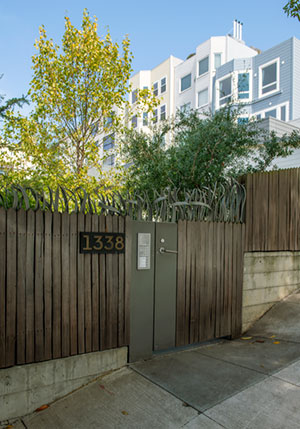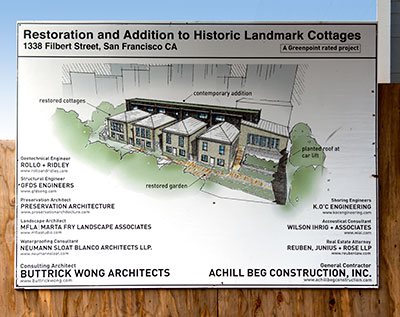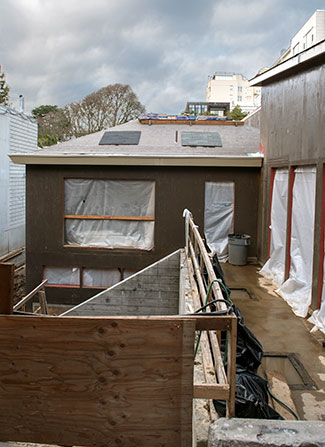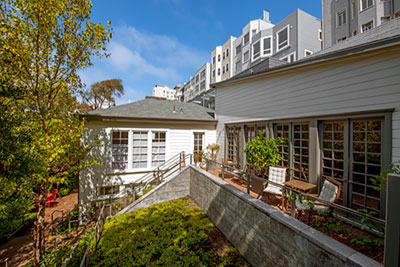San Francisco Landmarks
Filbert Cottages
1338 Filbert Street
Built 1907
Four vernacular frame cottages stand on a mews perpendicular to Filbert Street. They were built just after the 1906 Earthquake and Fire had devastated Russian Hill, and the high demand for housing was met by skilled craftsmen-builders rather than by known architects. Vernacular cottages are characterized by rusticity, simplicity, minimal embellishment, informality, modest scale, and sensitivity to the site. They anticipate the craftsman style popular in the early 20th century.
During the 1940s, Marian Hartwell used one cottage as her home and as the School of Basic Design & Color where she taught the principles of the California Decorative Style. The other three cottages were rented to students and other tenants.
From 1926-40, Hartwell had taught in the Design Department of the California School of Fine Arts during the period of great WPA art, both nationally and in San Francisco. The murals in Coit Tower, Rincon Annex, and Beach Chalet were painted by her colleagues and students: Piazzoni, Cravath, Stackpole, Oldfield, Labaudt. The fever of activity of the muralists beginning in 1934 made San Francisco a center for this kind of art and the political activity that accompanied it.
Hartwell eventually bought the Filbert Street property and lived there until 1972. She designed the common garden, brick walkways, and patios that are still there.
Source: Russian Hill Neighbors and San Francisco Planning Commission Resolution 16187 dated 12 July 2001

The Filbert Cottages revitalization project began in 2007 when a San Francisco couple bought the site.
Five years of planning followed by five years of construction were required to renovate the derelict cottages and convert them into four condominiums. The project preserved much of the historic siding, single-paned wooden windows, brick pavers and original framing.
The character of the cottages and landscaping remain intact.
Source: The Construction Specifier

In 2023, the market value of each cottage was about $4,000,000.

Strictly speaking, a mews is a row of stables and carriage houses with living quarters above them, built behind large city houses before motor vehicles replaced horses in the early twentieth century.
The first set of stables to be referred to as a mews was at Charing Cross in London. The royal hawks were kept at this mews beginning in 1377.
Cottage Row in San Francisco is a mews which is not gated.



